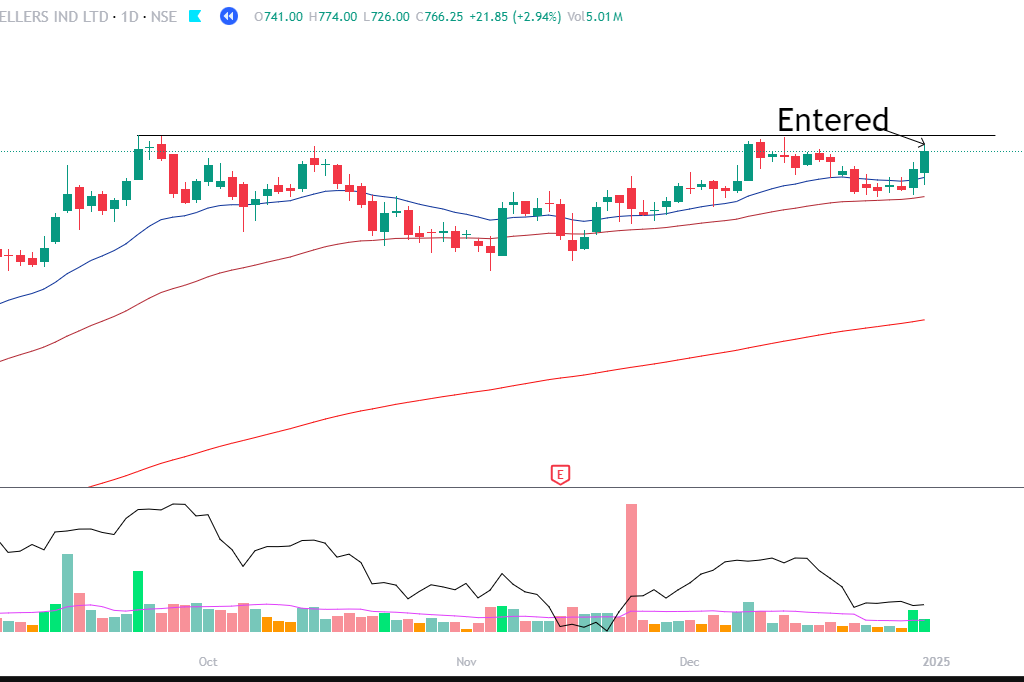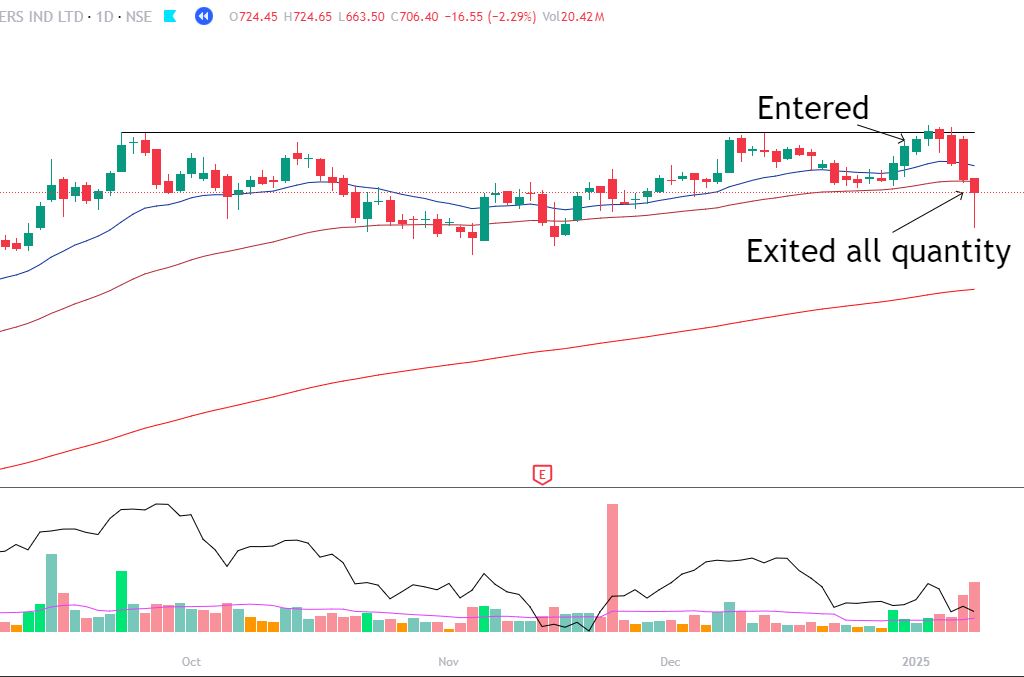Predefined Stop Loss Case Study
A stop loss is a predefined price level at which a trader exits a trade to limit losses. It acts as a risk management tool, automatically closing a position when the market moves against the trade. Stop losses help traders protect capital, control emotions, and maintain discipline in executing their strategies.
Sticking to a predefined stop loss is crucial for long-term trading success. It helps protect capital, limits emotional decision-making, and prevents small losses from turning into significant drawdowns. A disciplined exit strategy ensures that you stay in control of risk, allowing you to trade consistently and focus on high-probability setups. Cutting losses early is the key to surviving and thriving in the markets.

We entered KALYAN JEWELLERS at this level, setting 715 as the predefined stop-loss for this position.

We entered KALYAN JEWELLERS at this level with a predefined stop-loss of 715. As it hit our stop, we followed our rule and exited all our quantity, moving to the next better trade opportunity. A few days after this trade, during our post-trade analysis of the previous month’s trades, we observed that the stock had fallen 30%+, which meant we saved a lot of money, energy, and psychological stress.

Key Takeaways:
✅ Disciplined Exit: Sticking to our stop-loss prevented a significant drawdown.
✅ Capital Preservation: Avoiding a 30%+ decline allowed us to protect our capital and reallocate funds effectively.
✅ Psychological Strength: Exiting early helped us maintain emotional balance and focus on better trade setups.
✅ Efficiency & Growth: Instead of holding a losing trade, we moved on to high-probability opportunities, improving our performance.
Lesson: Strict stop-loss adherence is key to long-term success in trading! 🚀



